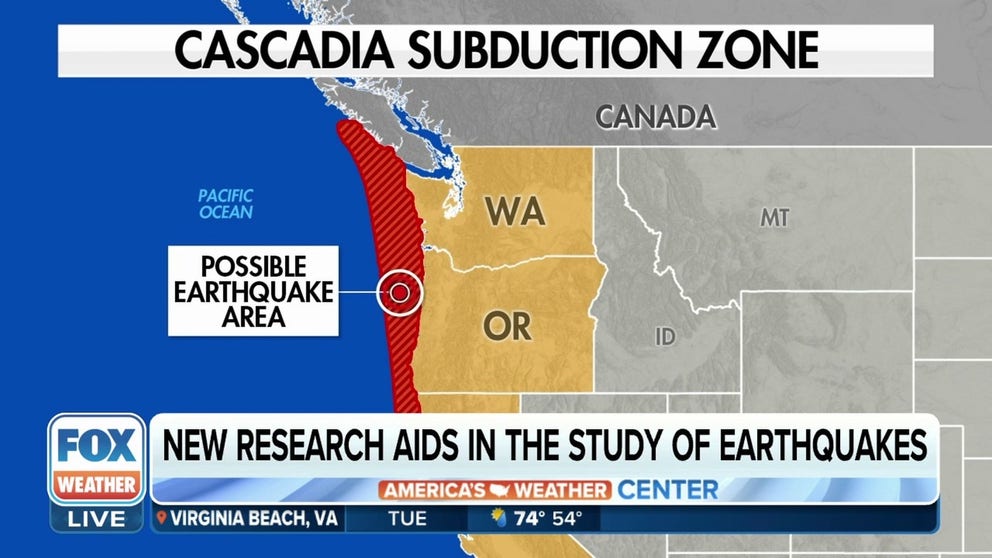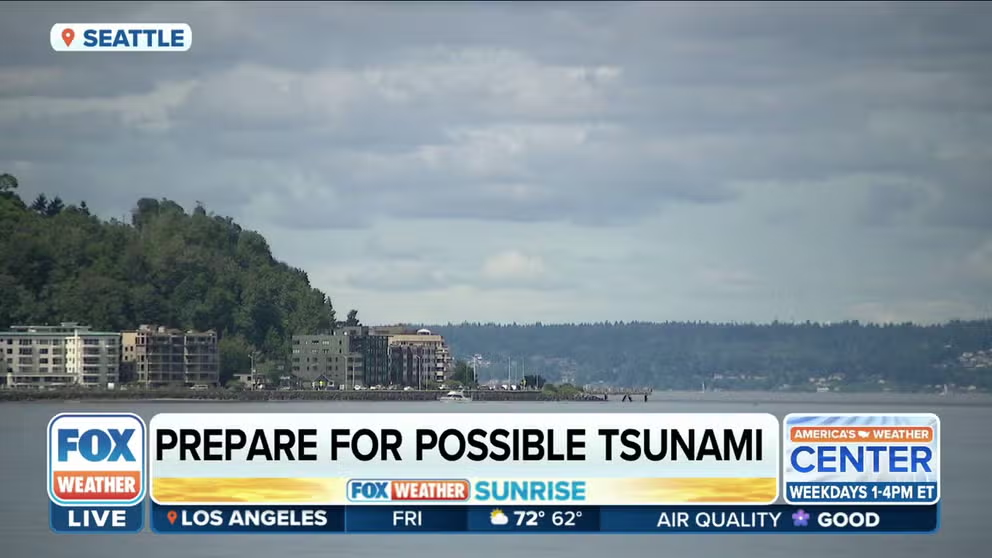9.0 quake rocked the Pacific Coast 324 years ago and sent an 'orphan tsunami' to Japan
The quake that struck off the Pacific Coast on Jan. 26, 1700, not only forever altered the coast's geography but also sent a tsunami across the ocean that struck Japan several hours later.
New research provides more insight into area on WA/OR border that could produce major earthquake
Scientists at the University of Washington have recently made a discovery giving them more insight into an area that could produce a major earthquake and coastal towns are on alert. Fox News multimedia reporter Jake Karalexis has the latest.
On Jan. 26, 1700, a massive 9.0 earthquake ruptured hundreds of miles along the deep offshore waters of the Pacific Coast, forever altering the local landscape and sending a tsunami not only across much of North America's western shores but also thousands of miles across the Pacific Ocean into Japan.
Scientists have warned it's only a matter of time before history repeats itself.
The discovery of the quake and its precise date is relatively recent. Japanese historical records noted the occurrence of an "orphan" tsunami on Jan. 27, 1700. Coastal communities recorded a mysterious tsunami reaching as high as 10 feet as it arrived at their shores, with no one feeling an earthquake that would have been an obvious cause. More than a dozen homes were destroyed.
HOW TO WATCH FOX WEATHER ON TV
Along the Western U.S., scientists and historians have used sediment deposits, oral histories of Native Americans and clues from "ghost forests" to correlate the events.
"Indigenous Native American and First Nation tribes living on the coast of Vancouver Island have passed down oral histories which tell of an earthquake and tsunami that collapsed houses of the Cowichan people on Vancouver Island and caused numerous landslides," the Pacific Northwest Seismic Network tweeted Thursday amid a thread describing what happened that fateful day. "The tribes described long-lasting shaking that was so violent people could not stand. The village of the Pachena Bay people was completely destroyed by the tsunami and there were no survivors in settlements located less than 75 ft above the waterline."
Examining the trunk rings of living trees and dead trees along the coast allowed researchers to conclude a great seismic event occurred in the winter of 1699-1700, even though it predates earliest documented history along the coast by nearly 100 years, PNSN said.
Scientists determined entire forests died across hundreds of miles when the coasts of what are today Washington, Oregon and northern California suddenly dropped 4-6 feet, flooding the coastline with seawater amid an incredible tsunami.
Study: Puget Sound earthquake could trigger tsunami in Seattle
A new study found that a Puget Sound earthquake could possibly trigger a tsunami in Seattle in the future.
The radical change in geology would have required the Cascadia fault to rupture some 600 miles between Vancouver Island and northern California, creating a massive 9.0-9.2 quake that triggered the ocean-wide tsunami, according to researchers.
The tsunami would have taken about nine hours to race across the Pacific at speeds of about 500 mph to reach Japan, placing the time of the quake on the evening of Jan. 26.
Back along the North American west coast, the quake likely caused violent shaking for as long as five minutes, seismologists have estimated.
Cascadia Quake will happen again someday
Seismologists have warned a similarly-sized Cascadia Quake is not a matter of if, but when it happens again.
Research indicates such quakes happen roughly every 300-500 years, putting the current day in the window. Seismologists give a 37% chance of a quake measuring at least magnitude 7.1 occurring within the next 50 years.
Emergency managers have for years been developing plans to deal with the destruction the large quake itself would cause to the millions who now live along the coast. They also warned that a large tsunami could reach the beachfront communities in a matter of minutes after such a large quake.
Tsunami warning sirens have been installed along the coasts and signs lead residents to higher ground.

